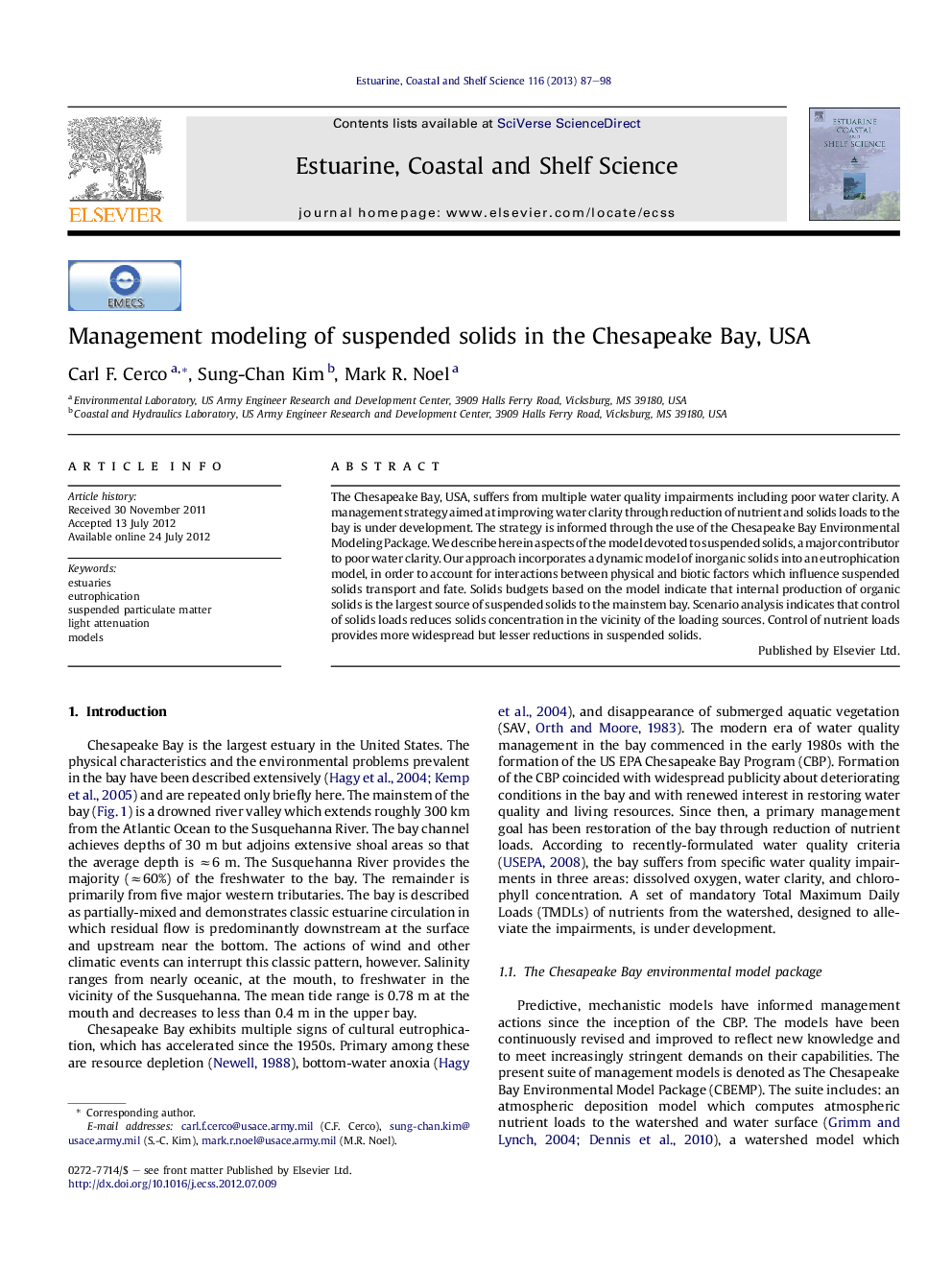| Article ID | Journal | Published Year | Pages | File Type |
|---|---|---|---|---|
| 6385133 | Estuarine, Coastal and Shelf Science | 2013 | 12 Pages |
The Chesapeake Bay, USA, suffers from multiple water quality impairments including poor water clarity. A management strategy aimed at improving water clarity through reduction of nutrient and solids loads to the bay is under development. The strategy is informed through the use of the Chesapeake Bay Environmental Modeling Package. We describe herein aspects of the model devoted to suspended solids, a major contributor to poor water clarity. Our approach incorporates a dynamic model of inorganic solids into an eutrophication model, in order to account for interactions between physical and biotic factors which influence suspended solids transport and fate. Solids budgets based on the model indicate that internal production of organic solids is the largest source of suspended solids to the mainstem bay. Scenario analysis indicates that control of solids loads reduces solids concentration in the vicinity of the loading sources. Control of nutrient loads provides more widespread but lesser reductions in suspended solids.
